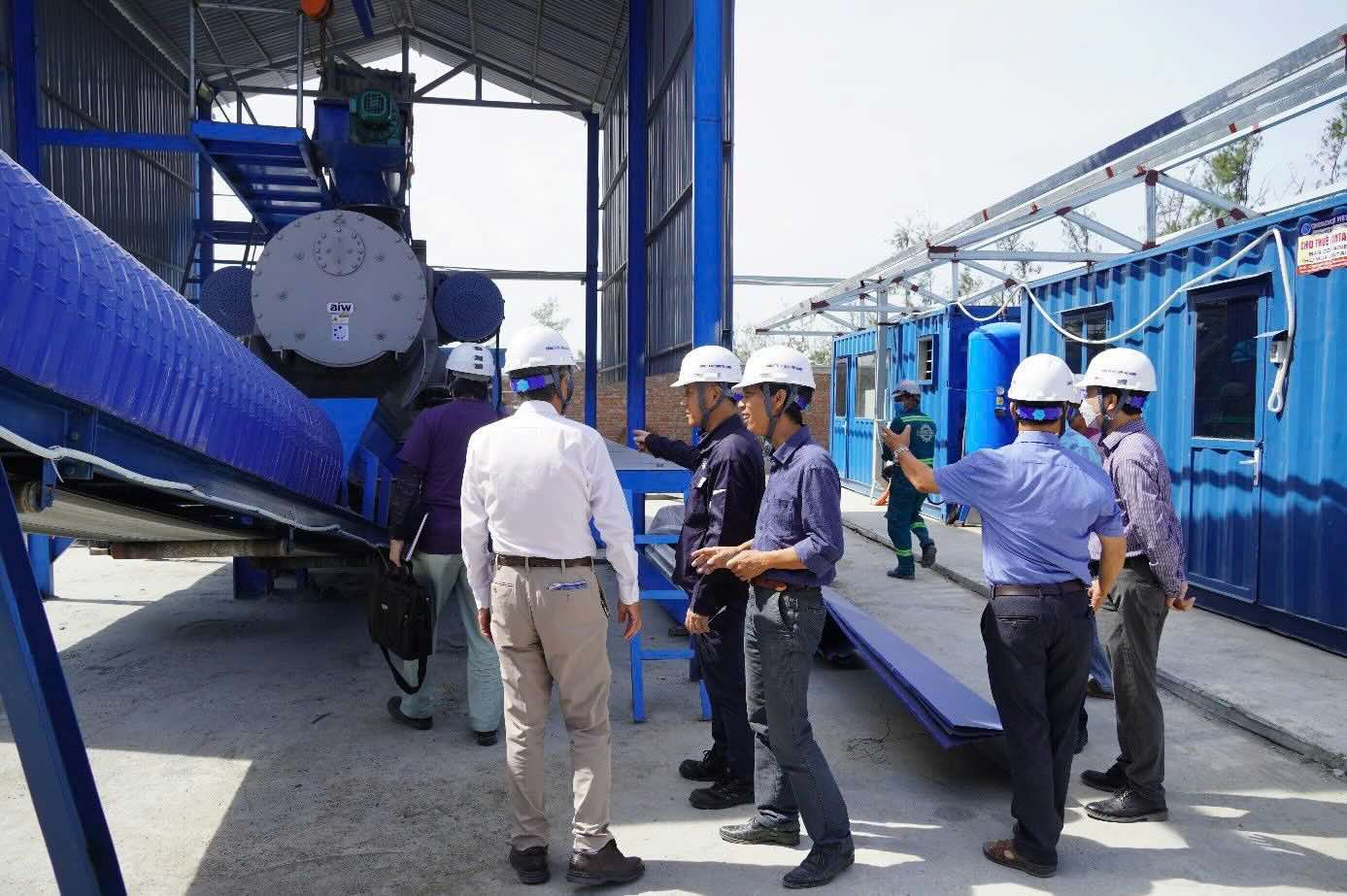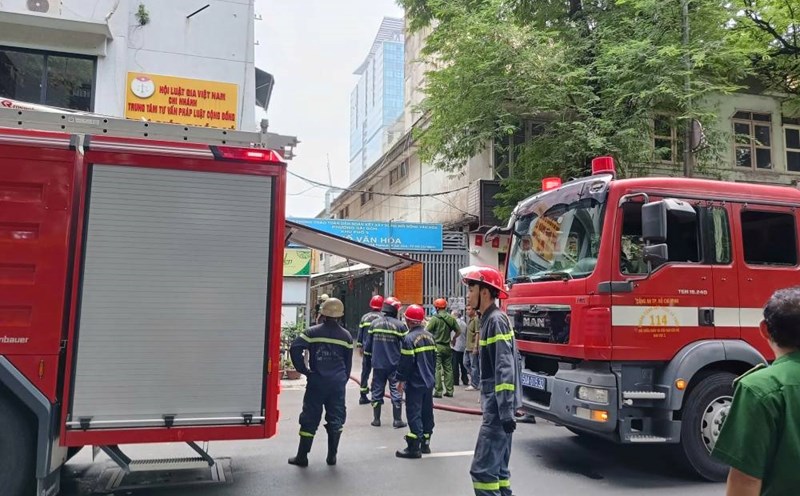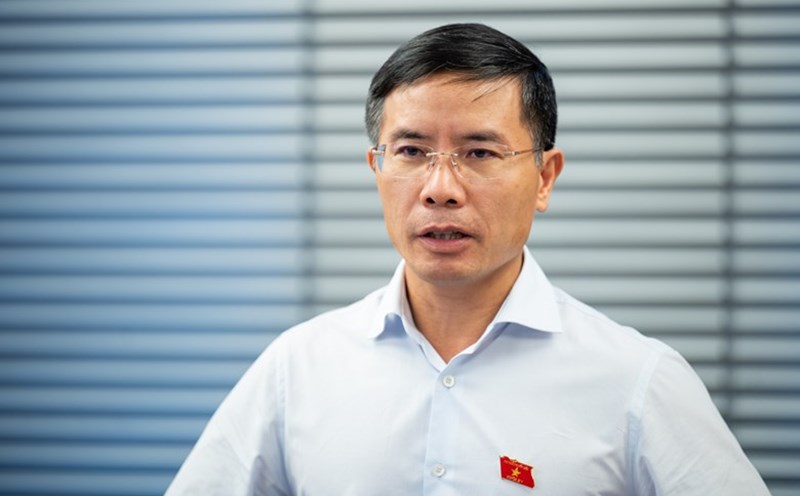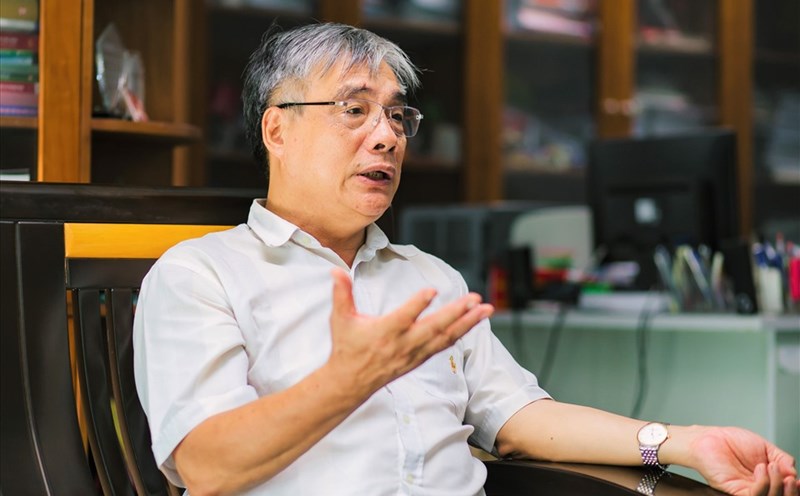In Vietnam, DAP production generates millions of tons of Gyps waste each year. In Hai Phong alone, the amount of waste from the DAP - Dinh Vu Factory has exceeded 4 million tons and continues to increase rapidly, threatening the environment, water, air and the lives of people in the surrounding area.
This type of waste contains many dangerous impurities such as acids, fluor, heavy metals... if not treated properly, it will cause long-term pollution and will be difficult to recover.
While the area of contained land is increasingly limited, storage and treatment costs are increasing, the problem of Gyps waste treatment is becoming urgent. This is not only an environmental requirement but also a prerequisite for Vietnam to implement a circular economic model, reducing the burden of resources and pollution.

Project to test modern processing technology
To solve the problem, the City People's Committee. Hai Phong and the Department of Science and Technology have assigned the Institute of Construction Materials (Ministry of Construction), DAP - Vinachem Joint Stock Company and Dinh Vu Xanh Joint Stock Company to implement the Gyps waste treatment testing project. The goal is to take advantage of the CaSO₄ component in the waste to make cement additives, traffic background materials and leveling construction.
This treatment technology is the technology of drying mixing to create seeds, without generating secondary products discharged into the environment. The products after treatment meet environmental safety standards, ensuring natural radioactivity below the prescribed threshold (I<1).
DAP Joint Stock Company - Vinachem and Dinh Vu Xanh Joint Stock Company not only play a supporting role but also proactively invest in equipment and a line system with a capacity of 30 tons/hour. This is a testament to the change in thinking from " avoiding" waste to proactively recycling, contributing to closing the production cycle.
In addition, the Department of Science and Technology of Hai Phong has coordinated to submit to the Ministry of Science and Technology to issue two national standards: TCVN 14325:2024 (fill material) and TCVN 14326:2024 (bed material, road foundation). This is an important step in legalizing and standardizing the use of recycled Gyps waste products in infrastructure construction.
Environmental and economic benefits
The project results bring clear benefits: reducing the area of the landfill to 48 hectares, limiting wastewater containing flo, heavy metals, acids seeping into groundwater and reducing dust distribution. In addition, recycled products can replace traditional materials, reducing pressure on natural resource exploitation.
Dr. Luu Thi Hong - Deputy Director of the Institute of Construction Materials, project manager shared: With dry mixing technology, the impurities in waste are converted into low-soluble minerals, the output products are active and do not cause dust in construction. This technology is completely feasible and contributes significantly to the circular economy".
Dr. Bui Thi An - former Member of the 13th National Assembly, Director of the Institute of Natural Resources, Environment and Community Development also emphasized the role of local governments in supporting businesses to apply technology into practice, especially in projects of environmental significance like this.
For the project to be successfully implemented and expanded to other localities, close coordination between the parties is a key factor. DAP - Vinachem Joint Stock Company needs to continue providing input materials, accompanying Dinh Vu Xanh Joint Stock Company in operating processing technology. Most importantly, Hai Phong City needs to take strong action, remove administrative procedures, and create a favorable legal corridor for businesses to invest in waste treatment.
The thorough treatment of Gypsum is a fundamental solution for Hai Phong City to solve the environmental problem that has been going on for many years, while contributing to the implementation of sustainable development commitments and protecting public health.
The support of the government and businesses in this project also has a pioneering meaning: turning environmental challenges into opportunities for developing a circular economy, where "waste becomes resources", contributing to building Hai Phong into a green - clean - modern port city.
The project to treat phosphorus plaster waste is not only a technological advance, but also a symbol of a new development stage, when Vietnam proactively combines economic growth and environmental protection in a sustainable way.











